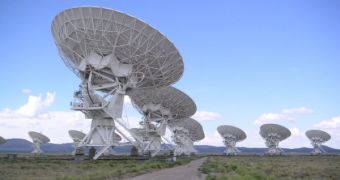Over the past few decades, the number of astronomical observatories around the world has increased considerably, and a wealth of new data has come to scientists' attention. But, at this point, a researcher looking to combine, for example, information obtained by NASA with data from ESA or the European Southern Observatory (ESO) cannot really do this. A new European initiative plans to make space research easy, and to facilitate new astronomical discoveries, by providing a large infrastructure for the world's virtual observatories, ScienceDaily reports.
“It is a question of equality, too. Ultimately, all scientists will have equal access to all possible data on any astronomical object,” Euro-VO DCA project coordinator Francoise Genova says. Virtual observatories (VO) have been touted as a potent scientific tool over the past few years, but one of their main flaws is that they usually combine data from only one space agency, such as, for example, NASA. Every bit of pertinent data recorded by its ground- or space-based telescopes is centralized into an all-sky map of the Universe, with objects of interest highlighted to draw attention.
But, regardless of how complete such a map is, it may still not contain all available data of a single object, so the Euro-VO DCA project plans to eliminate this problem. Those behind the initiative imagine VO to which astronomers can connect to make discoveries, or to confirm existing studies, without the need of renting observation time on actual telescopes. All newly collected data would also be implemented into the observatories as soon as possible. “There were several strands to our work. Some data centers use grid-based systems, which use their own standards. We needed to develop a way that they could connect and exchange data with the broader VO standards,” the expert adds.
“Sharing data in astronomy has a long history, preceding the Internet by several decades. My institute, the Strasbourg astronomical data center (CDS), was set up to offer access to data in the early 70s, with punch card access, printouts and magnetic tape. They would send us letters asking for the data they wanted. Today, we receive 200,000 queries through the Internet every day!” Genova says. At the end of 2008, after completing its mission, the Euro-VO DCA was taken over by the Euro-VO AIDA (Astronomical Infrastructure for Data Access) initiative, funded by the European Union.
PhD students and postdoctoral researchers are among the main beneficiaries of the new and improved VO. Their interest in all things astronomical has increased considerably since the observatories were first created, as demonstrated by more participants showing up at dedicated conferences, and also online. The VO also allow for more people to access all available data, increasing the possibility of discoveries being made, or errors being discovered.

 14 DAY TRIAL //
14 DAY TRIAL //